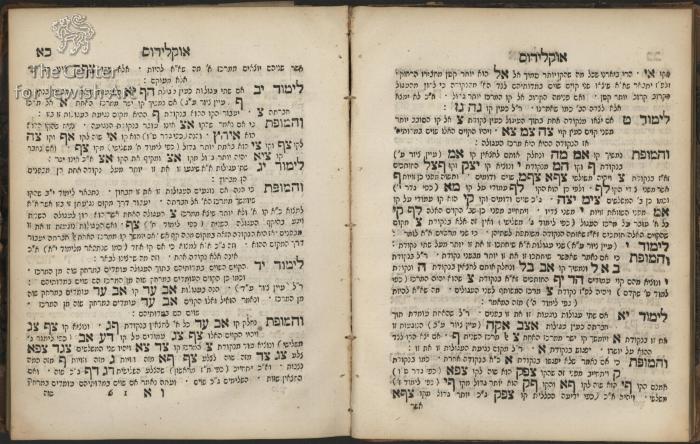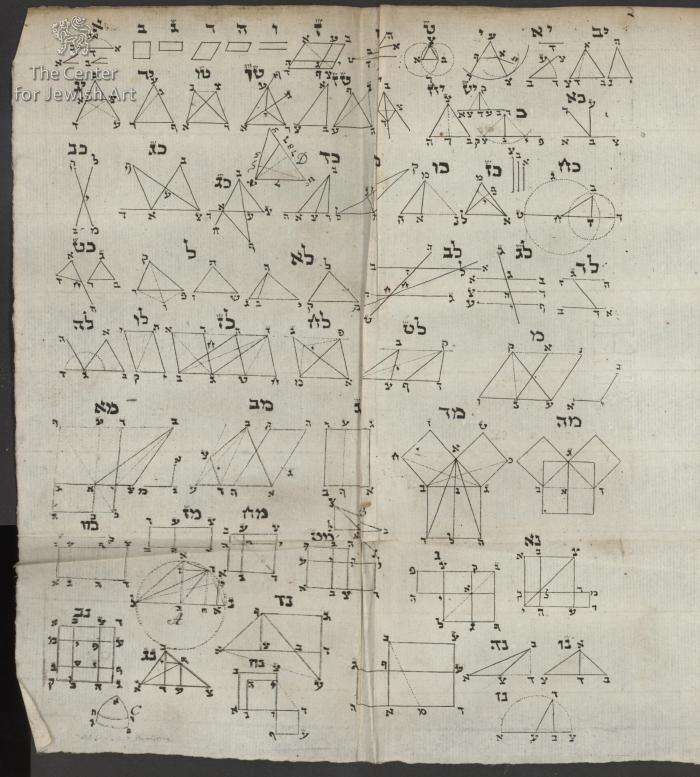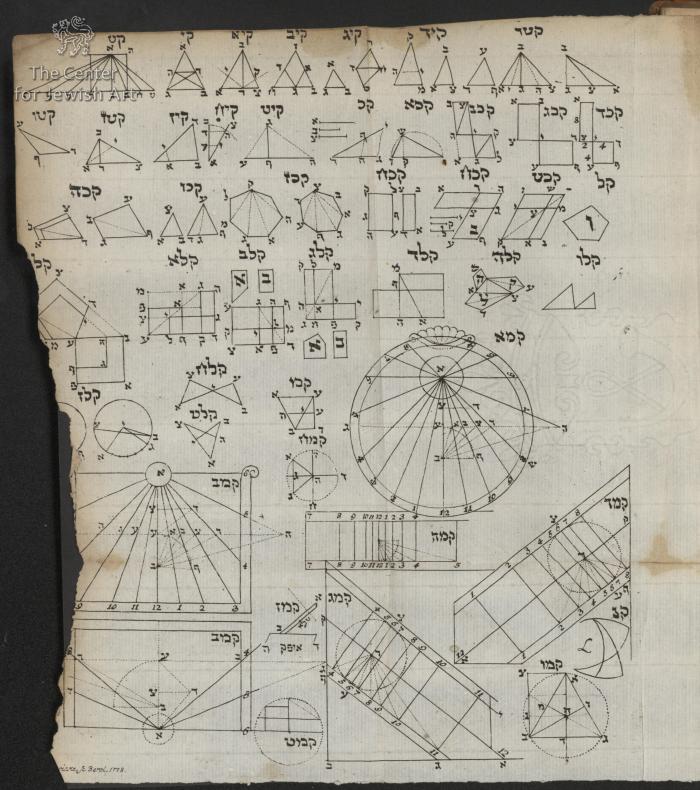Obj. ID: 35369 Euclides by Baruch ben Ya'akov me-Shklov, The Hague, 1780

sub-set tree:
The following description was prepared by William Gross:
There exist a number of Hebrew manuscripts that are translations of the works of Euclid, the first ones dating from the 13th century. Printed editions appeared much later.
No longer able to resist the influence of the Enlightenment, the Jews of Europe began in the late eighteenth century to debate the appropriate role of science in their religion and society. Although the Hasidim maintained the stance that classical science was heresy and that classical scientific texts should not be translated into Hebrew, a strong opposition, led by Rabbi Hagaon from Vilna, steadily gained influence. Rabbi Hagaon urged one of his disciples, Baruch from Schklow, to choose the most effective book on general science, but one that would not be too controversial, and translate it into Hebrew. Euclid's Elements, arguably the most widely read and influential classical scientific work, was the natural choice.
The study of Euclid, which had been neglected for several centuries, was resumed among Jews in Germany, and especially in Poland. Three new translations were made between 1775 and 1875. A new edition with four plates was published by Abraham Joseph (ben Simon) Minz, and annotated by Meïr of Fürth, the title being (Berlin, 1775). The learned Baruch Schick, usually known as "Baruch of Sklow," published five years later a new translation of the first six books of the "Elements," illustrated with 140 geometrical figures on three plates (The Hague, 1780).
Some of the most interesting features of the work include the apologies at the beginning which attempt to justify the translation of a forbidden book into the holy language, and the language that had to be specially created, or adopted from the Bible, to accommodate the mathematical terminology.
bound with the printed book "Omek Halachah", B.78.









